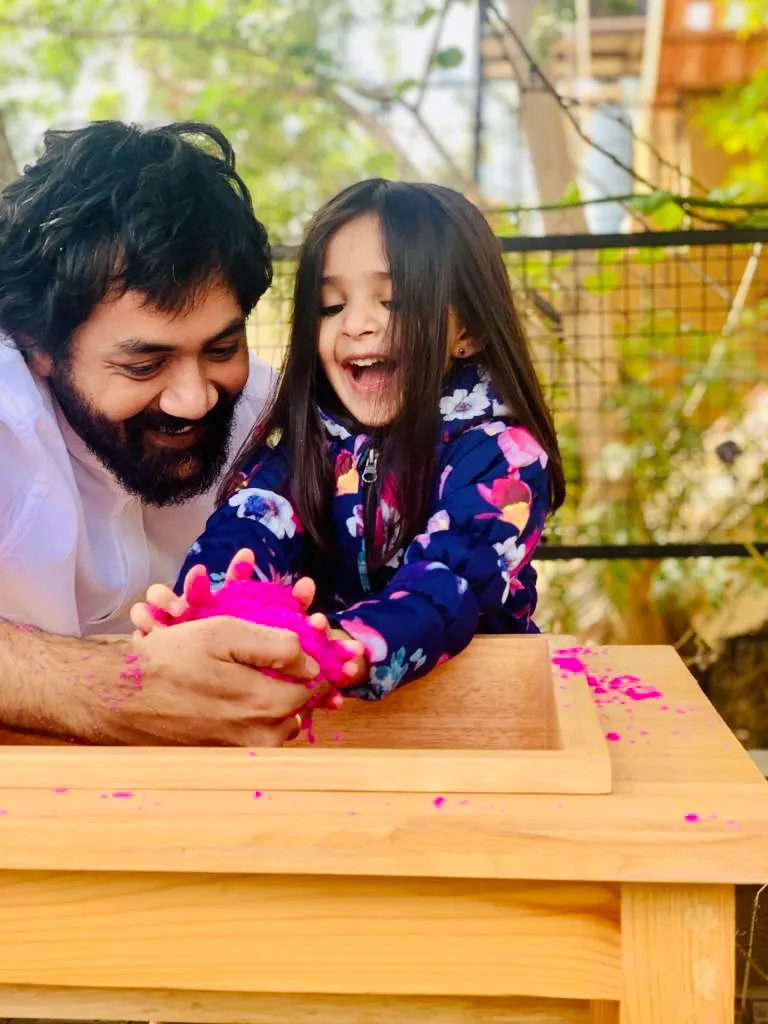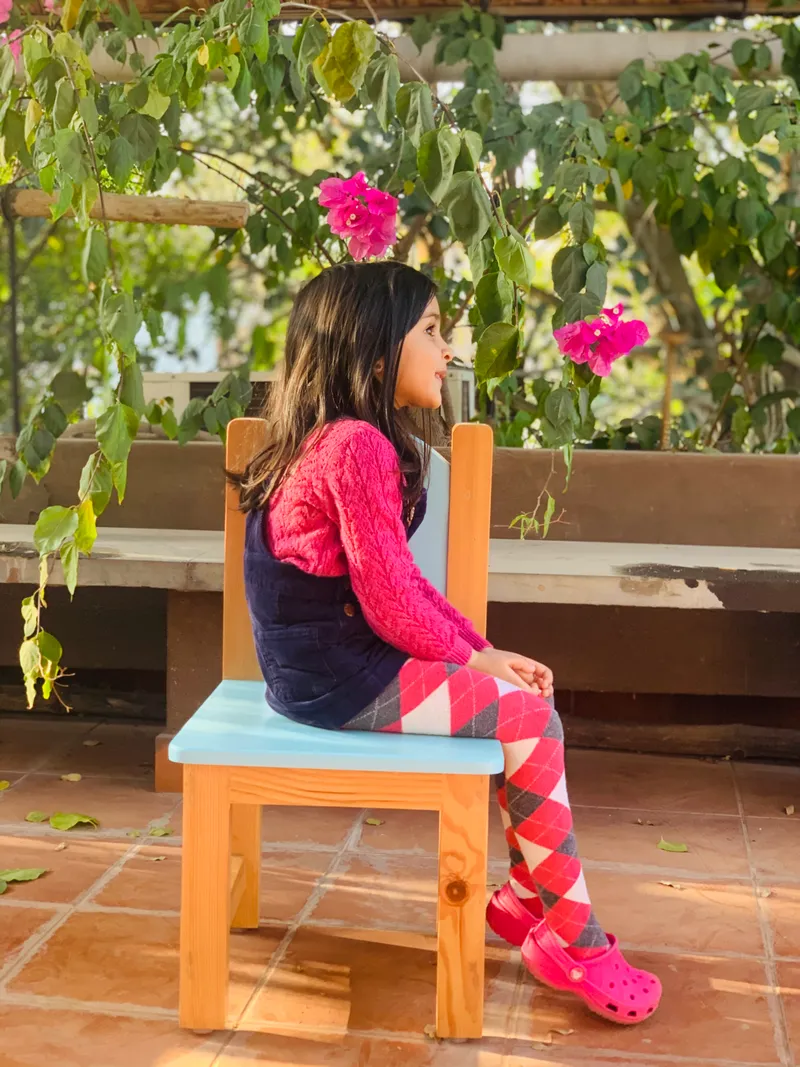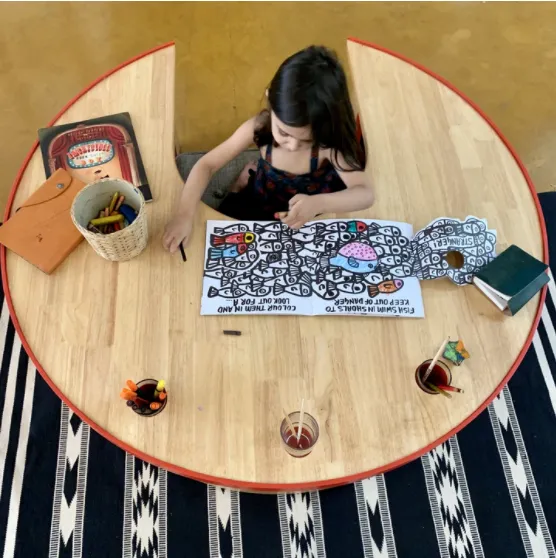This Bengaluru-based duo is handcrafting children’s furniture that helps in free flow of imagination
Founded by Karthik Srinivasan and Gayatri Vijayan, Gosh manufactures handcrafted imaginative furniture for children. The products range between Rs 3,000 and Rs 30,000.
In 2020, after the pandemic hit India, Bengaluru’s Karthik Srinivasan started spending time on woodwork. First, he made a bookshelf for his daughter Akira, whose growing collection of books desperately needed a home. When he shared its picture on his social media profiles, it received overwhelming responses, even from several strangers.
After some more pieces of children’s furniture, orders started pouring in. Thus, Karthik, along with his wife Gayatri Vijayan, started building furniture for children through their brand Gosh.

Gayatri Vijayan and Karthik Srinivasan, Founders of Gosh
“We realised that our homegrown project had tremendous potential, especially since parents are constantly on the lookout for imaginative furniture,” Gayatri tells YS Weekender during a recent conversation.
Based out of Bengaluru, Gosh only operates within the city as of now. However, the duo has started looking out for ways to reach other Indian cities as well.
“The name Gosh was inspired by a child’s innate sense of wonder and curiosity about the world around her. It was that wonder that we wanted at the heart of our identity — in the name, the logo, the colours we use, our tone, and communication. Our design thinking has always hinged on the necessity and value of play. So, it mattered to us that it found its way into every aspect of the identity as well,” Gayatri adds.
Taking the unconventional route
Gayatri is a student of architecture with a master’s in Design from the National Institute of Design, Ahmedabad. She previously worked with non-profit organisation Janaagraha. Karthik, on the other hand, studied hotel management, has an MBA and has worked in consumer behaviour at Quantum Consumer Solutions.
However, after meeting each other, they found they were both eager to work on their own terms, and began exploring slightly more unconventional paths. In 2008, they started design practice and founded Oddity, a collaborative design practice that focuses on meaningful transformation through experience design. Oddity creates impactful design through brand stories and spatial narratives.
As parents, Gayatri and Karthik were constantly looking for cosy and imaginative furniture for children. Since they would often fail to find something they really loved, the couple started experimenting by making their own furniture. At the same time, they realised the opportunity that existed in the children’s furniture market.

Beach-in-a-box by Gosh
“We started Gosh with the belief that there are bound to be many more parents looking for similar products like we did: well-designed pieces of furniture for children that enable play. As space designers, we were also excited about the prospect of building furniture that can be customised for children with varying needs and preferences,” Gayatri says.
Many of the Gosh products are variations of what Karthik and Gayatri had built for Akira, based on how she liked to play: a pop-up teepee, an art trolley, and a portable sandpit, among others. Other products by Gosh include BLAT (big) and SLAT (small) art stations for young artists; the Cocoon— a low wraparound table that makes for a cosy maker-space; a Beach-in-a-Box, which is a portable sand-and-water station.
Gayatri says, “The idea remained the same — to create little pockets of play led by how she enjoyed playing.”

The Solo by Gosh
Behind the scenes
Gosh works in partnership with a team of vendors and the entire process is collaborative.
Once the founders have an idea that they are excited about, Karthik usually builds a prototype in his home woodworking studio. “This gives us a chance to iterate and modify both the aesthetic and the functionality and test it out for a little while with our daughter Akira,” Gayatri explains.
Once they are happy with the product and design, they send it to the factory where the company’s team of carpenters build another prototype. Once that is done, the founders confirm if all the metrics are met.
“We shoot the products ourselves since we really believe that real-life images where the products are being used are much more vibrant than standard studio product shots. And this has been validated time and again by our social media responses,” Gayatri adds.

The Cocoon by Gosh
Ultimately, the marketing team begins with social media posts that lead users to the product on the website from where the purchases happen. The team mostly interacts directly with the consumer, checking if they need any specific customisation.
Children’s furniture by Gosh are priced between Rs 3,000 and Rs 30,000. All its products are handcrafted and are made in limited quantities.
According to Grand View Research, the global kids' furniture market size was valued at $29.4 billion in 2018, and was expected to grow at a CAGR of 4.48 percent between 2019 and 2025. Players like India, , , and are other prominent players in the childrens' furniture space.
At present, Gosh is working on new products for children. First is a line of products that cater to children with special needs. The founders are in talks with a few child development psychologists to understand the needs better and design the furniture based on these insights and learnings.
The second is a product line for pets. “In the longer run, we are looking to create a range of children’s experiences that enable play and imagination,” Gayatri adds.
Edited by Saheli Sen Gupta









